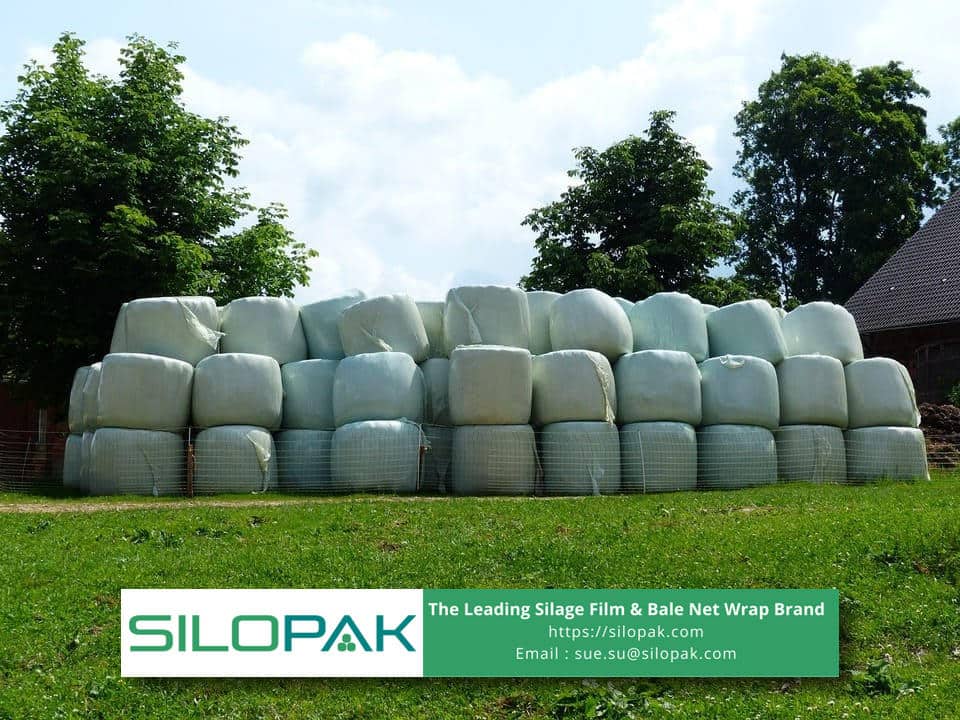
The provision of fermented cow feed provides many benefits, not only for the nutritional needs of livestock but also for optimal health and immune system. The condition is you must be able to make it correctly and with the correct equipment as well. The use of good-quality film silage is one of the determining factors in the manufacture of this type of animal feed.
Whether you are a novice or an experienced farmer, your knowledge of fermented cow feed should continue to improve as technology in agriculture continues to develop. The tradition of making preserved feed may have been passed down from generation to generation. But there is always updating of equipment so that the silage-making process can be more effective and efficient.
In this article, let’s thoroughly discuss what fermented cow feed is, what its benefits are, and how to make the perfect silage. Let’s see the description in this article to the end for a full explanation.
contents
What is Fermented Cow Feed?
This is a formulation of a feed ingredient for cattle that is preserved through a fermentation process by preserving it in an airtight container or wrapped in silage film, bale net wrap, or round bale film.
The composition of fermented cow feed can be green feed, including alfalfa, asparagus, elephant grass, various vegetables, green corn, and others. This material can be mixed with coarse feed such as straw, husks, sorghum husks, and corn cobs. The next composition includes agricultural by-products such as grain, bagasse, cassava pulp, and others.
How to Make Fermented Cow Feed
You can start by mixing bran, wheat bran, and corn flour in one bowl. Additionally, combine brown sugar, dried vegetables, forage, and water, and mix them well. For better results, use straw as an important ingredient when making silage. Next, wrap the mixture with silage film to optimize the fermentation process, ensuring it stays durable for 3-4 months.
The selection of feed ingredients for fermentation plays a crucial role in optimizing silage nutrition. Equally important, the equipment supporting the fermentation process should not be overlooked. Make sure to collaborate with the best suppliers to secure high-quality silage film.
Understanding the Role of Silage Film
So, what is the function of silage, bale net wrap, or round bale film? Essentially, it serves as a packaging device that can replace bulky airtight containers. After preparing the hay and other feed ingredients, immediately wrap them in several layers of silage film to begin fermentation.
By carefully choosing the right silage film, you protect your silage from tears or punctures that could compromise the fermentation process. Moreover, high-quality silage film should be white and made from specific materials to prevent UV light exposure during storage.
When you partner with the most credible suppliers, you won’t need to worry about constantly checking the quality of the silage film. Furthermore, you may secure a better price by selecting the right manufacturer. Therefore, take time to research online to ensure your procurement of silage film includes both quality assurance and cost efficiency.
Making bales in square shapes speeds up the silage wrapping process, enabling fermentation to start quickly. Additionally, transporting the bales becomes easier, and they can be stacked in open farmland without risking fermentation failure.
When the dry season arrives, you can serve the silage with a flavor that livestock will enjoy, while also providing essential nutrition that supports their digestive health. Finally, bulk-produced fermented cow feed can be sold to meet the demand from small-scale farmers around you.

Various Benefits of Fermented Cow Feed
The decision to raise cattle must be accompanied by a responsibility to ensure their feed and health. The high sale value of the cattle must be accompanied by a good maintenance plan so as not to lose money. The provision of fermented cow feed provides benefits for livestock, as follows:
- Optimizing the utilization of crop yields and preventing agricultural organic waste from being wasted. Straw and other crop residues can be collected immediately to make highly nutritious fermented cow feed.
- Reduce feed costs by independently producing fermented cow feed. Especially during the dry season, when green feed is scarce, you don’t need to buy feed from a factory because you can produce it yourself.
- Good feed and fermentation formulations will support livestock endurance, especially in the digestive section of cows. The use of drugs and antibiotics can be minimized because the livestock is naturally healthy.
- Cow dung tends to be odorless and good for soil health and can even be used as biogas fuel.
- Making silage supported by high-quality silage film will ensure the availability of highly nutritious feed in the dry season.
Finally, the manufacture of fermented cow feed is ideally supported by the availability of good raw materials with the correct composition. On the other hand, the fermentation process must be optimized by using high-quality silage film, bale net wrap, or round bale film. The use of tools and machines to wrap silage is also worth considering, especially when you make silage in large quantities.

